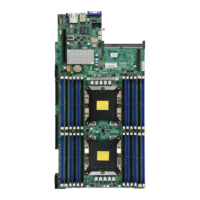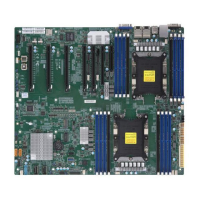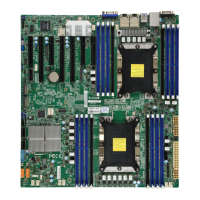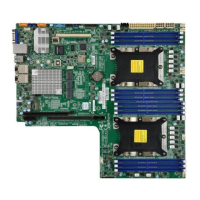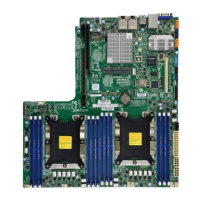Note: The table above is continued on the next page.
16
Super X11DPX-T User's Manual
Motherboard Features
I/O Devices
• Serial (COM) Port
• Two Fast UART 16550 ports (one port on the I/O back panel, one header on
the motherboard)
• SATA 3.0
• Eight SATA 3.0 connections supported by Intel PCH (I-SATA 0-3, 4-7)
• Two SATA 3.0 ports with power-pin built-in, w/support of Supermicro SuperDOM
(S-SATA0/S-SATA1)
• RAID (PCH) • RAID 0/1/5/10 (RSTe 5.x)
Peripheral Devices
• Two USB 3.0 ports on the rear I/O panel (USB 4/5)
• One internal USB 3.0 header with two USB connections on the motherboard for front access (USB 6/7)
• One Type A USB 3.0 connector for front access (USB 8)
• Two USB 2.0 ports on the rear I/O panel (USB 0/1)
• One internal USB 2.0 header with two USB connections on the motherboard for front access (USB 2/3)
BIOS
• 32 MB SPI AMI BIOS
®
SM Flash UEFI BIOS
• ACPI 3.0/4.0, USB keyboard, Plug-and-Play (PnP), SPI dual/quad speed support, and SMBIOS 2.7 or later
Power Management
• Main switch override mechanism
• Power-on mode for AC power recovery
• Intel Intelligent Power Node Manager 4.0 (Available when the Supermicro Power Manager [SPM] is installed and a special
power supply is used. See the note on page 22.)
• Management Engine (ME)
System Health Monitoring
• Onboard voltage monitoring for +3.3V, 3.3V standby, +5V, +5V standby, +12V, CPU core, memory, chipset, BMC, and
PCH voltages
• CPU System LED and control
• CPU Thermal Trip support
• Status monitor for on/o control
• CPU Thermal Design Power (TDP) support of up to 205W (See Note 1 on the next page.)
Fan Control
• Fan status monitoring via IPMI
• Dual cooling zone
• Multi-speed fan control via onboard BMC
• Pulse Width Modulation (PWM) fan control

